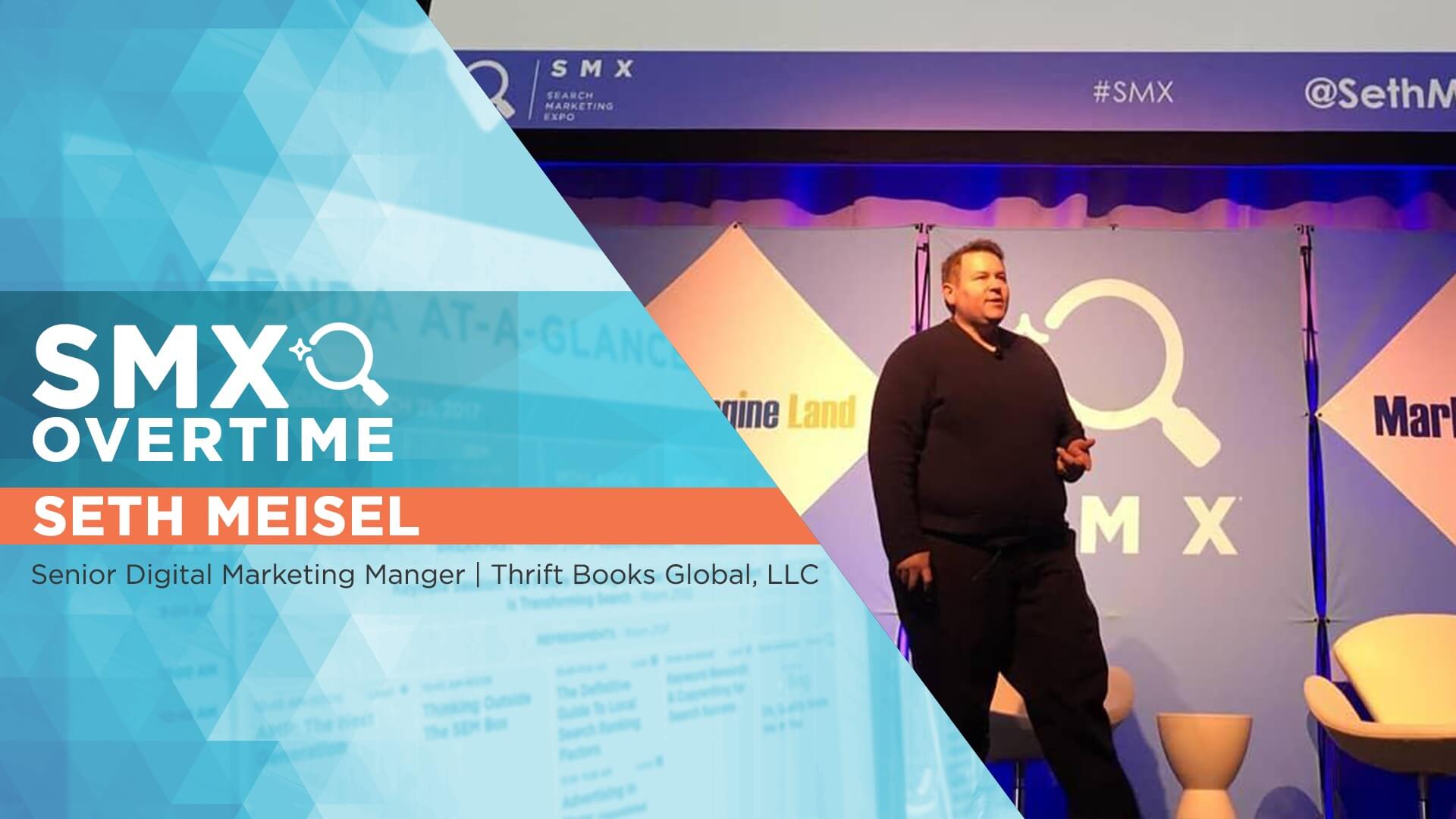SMX Overtime: How to use customer segmentation to test new value propositions
SEM expert Seth Meisel shares a real-time reason why stakeholder diplomacy is important. He also delves into 'proof of concept' with testing customer segmentation in Google Ads Customer Match.

Senior Digital Marketing Manager at ThriftBooks, Seth Meisel, offered his insight as a performance marketer for B2C e-commerce websites during the “Aligning Your Marketing With Your Customer’s Journey” session at SMX West. He also offered a first-hand experience about how working with multiple stakeholders with differing agendas and goals can be a lesson in diplomacy.
Do you trust your Google rep?
Meisel: I answered this during the Q&A part of the session and believe I said that I’d had multiple Google reps over my 12-plus years in paid search. In some cases, previous reps had pitched inefficient upper funnel products that didn’t fit well with our overall business goals. I did mention that our current rep is great because they’re recommending strategies or new products that align well with our current business goals. I’m glad I remained somewhat diplomatic though with my answer because a member of our Google account team ended up being in the audience!
How long did your A/B test take and what statistical confidence level did you use?
Meisel: The IF Function Test highlighted in my talk was more of a “proof of concept” for being able to segment messaging by new and repeat customers by utilizing Google Ads Customer Match and the IF Function in text ads. The test we did went 11 days, so it didn’t go long enough to reach statistical significance. We’re continuing to test different new and repeat value props in this way and look at other customer segmentations on our site like members of our loyalty program ReadingRewards. We also hope to expand this IF Function test into our Bing Ads account, but it requires breaking duplicating campaigns in Bing Ads currently.
How granular do you get with your audiences? Is reversing that funnel to re-format the website (the architecture, CTA location, etc.) important?
Meisel: We didn’t get very granular with the audiences utilized in this test. We used a two-year buyer file and two other AOV segmentations to segment ad messaging buy customers who have purchased from us versus users who haven’t been to our site or purchased from us. But overall, we have around 20 automated audiences via Salesforce Marketing Cloud and a similar amount for Bing Ads via Liveramp. Bing Ads has also released a feature called Ad Customizers for Expanded Text Ads, which will enable advertisers to customize ad copy based on whether they’re in a specific audience or not. At the end of the presentation, I laid out some next steps like expanding this test by utilizing audiences who have completed certain actions. For example, utilizing a customer match audience that is part of your loyalty program
To create audiences for Google Ads, must you have customer email addresses, or can you upload cookie data or other session data so you can target people who have even visited your site vs. non-visitors?
Meisel: Brad Geddes corrected me during the Q&A that in addition to emails, you can utilize RLSA / Website Visitor cookie data to create audiences in Google ads. Additional audience creation options include emails, phone numbers and mailing addresses as matchback data. Also, mobile device IDs as matchback options for customer match audiences. Google also offers audience creation options based on app users, Youtube users and custom combinations of website visitor, customer lists and similar audiences. Google is giving advertisers a lot of other audience creation options other than just email address!
Do you prefer setting up conversions directly in Google Ads or setting up Goals in Google Analytics and importing? Why?
Meisel: I don’t have a preference here and in my current role we utilize conversions via Google Ads. I believe Google Ads counts more absolute conversions when compared to comparable time periods in Google Analytics.
Contributing authors are invited to create content for Search Engine Land and are chosen for their expertise and contribution to the search community. Our contributors work under the oversight of the editorial staff and contributions are checked for quality and relevance to our readers. The opinions they express are their own.
Related stories
New on Search Engine Land
